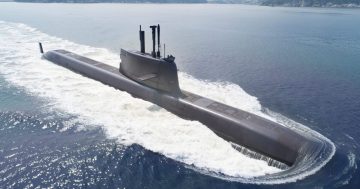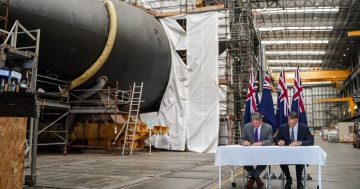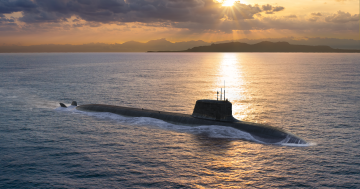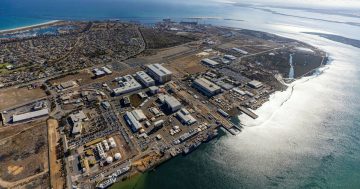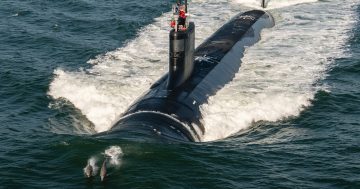
The new nuclear-powered submarine construction facility will be adjacent to the current Osborne shipyard. Photo: Defence SA.
The Federal Government has announced the appointment of a team of concept design partners for the construction of the Nuclear-Powered Submarine Construction Yard (NPSCY) at Osborne in Adelaide.
The announcement of Kellogg, Brown and Root (KBR) and a joint venture of AECOM and Aurecon will see nuclear infrastructure specialists and experienced shipyard infrastructure personnel from Australia and AUKUS partners brought together to design the shipyard.
The AUKUS Pillar One construct has seen Australia granted access to US and UK nuclear-propulsion technology for its submarines.
Australia will initially operate between three and five Virginia-class nuclear attack submarines of US origin from 2032 before construction of new SSN-AUKUS submarines is scheduled to begin at Osborne from the late 2030s for service entry from 2042.
The government says KBR has extensive experience in supporting design and project management for defence infrastructure facilities, and will be responsible for the design of the area of the NPSCY that will be used for steel-processing and fabrication facilities.
It says the AECOM and Aurecon joint venture will deliver the concept design for the rest of the NPSCY site, which will support the outfitting, consolidation and commissioning of the SSN-AUKUS boats.
The boats themselves will be built by ASC and BAE Systems, which will initially form a collaborative arrangement ahead of a longer-term incorporated joint venture to build the submarines.
ASC built and sustains the navy’s current conventionally powered Collins-class submarines, while BAE Systems builds nuclear-powered submarines for the UK’s Royal Navy, including the current Astute class and the future SSN-AUKUS boats.
BAE Systems will be required to transfer that knowledge and expertise to Australia, and the Commonwealth will hold sovereign protection rights in relation to the governance of the joint venture to preserve Australia’s national interest in the build program.
The 75-hectare site for the shipyard was acquired last November and sits alongside the current Osborne shipyard where the Hunter-class frigates are being built and where the Collins-class submarines will undergo their extensive Life-of-Type Extension (LOTE) program from 2026.
The site was agreed upon as part of a land swap, with the South Australian Government acquiring 13 hectares of Defence-owned land at Keswick and 38 hectares at Smithfield for future urban projects, and part of the Cultana Training Area north of Whyalla, which will be used for hydrogen and renewable-energy projects.
The project to build the shipyard is expected to create about 4000 construction jobs, while up to 5000 jobs will be required to build the submarines themselves.
The government says preliminary enabling works required to support the construction of the NPSCY began last December with site mobilisations and early works for a new carpark.
It says constructing the NPSCY will rely on highly skilled Australian engineering and design consultants, project control specialists, project managers, tradespeople and construction workers.
Deputy Prime Minister Richard Marles said the announcement of the concept design partners was another major milestone reflecting the government’s commitment to construct the boats in South Australia.
“Not only will this ambitious project create thousands of local jobs, it will deliver the most critical defence capability acquisition in our nation’s history,” he said.
Minister for Defence Industry Pat Conroy added: “This project will ensure Australia will be at the forefront of manufacturing the most advanced submarines in the world.”





